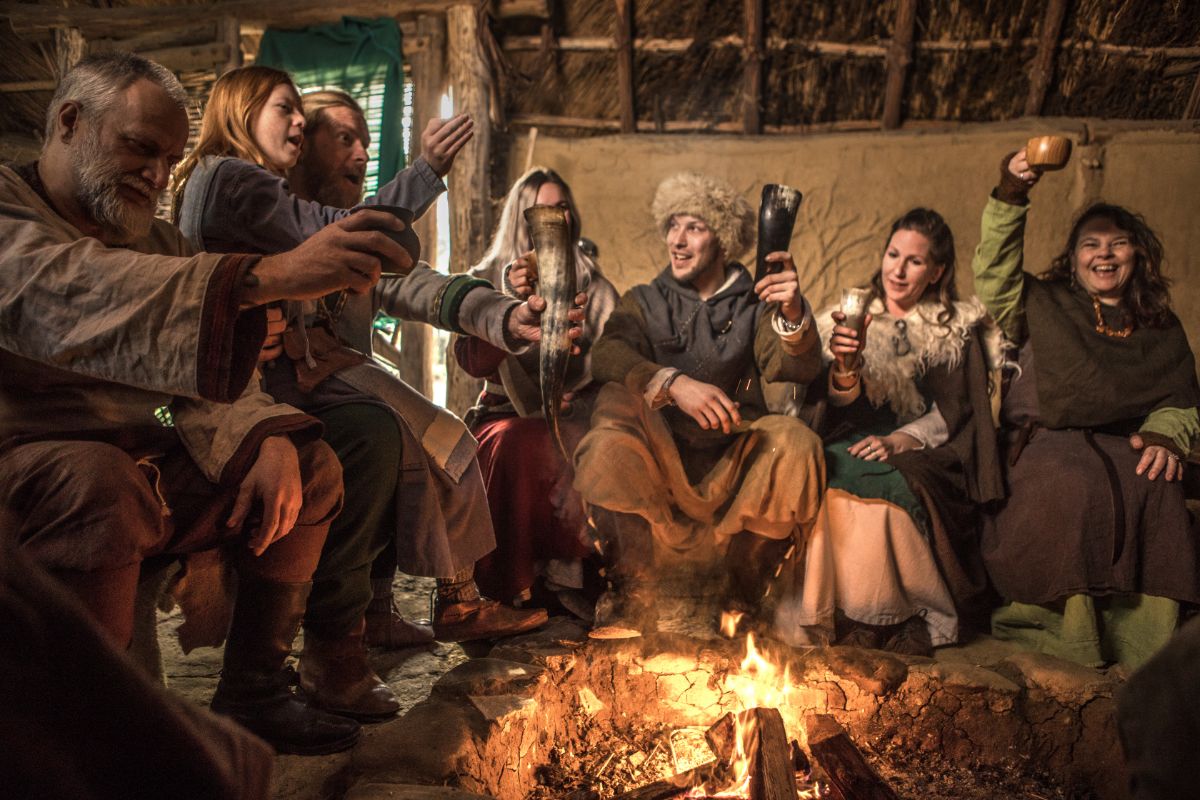Perceptions of pillaging Vikings eating vast slabs and meat and drinking endless tankards of mead don’t make sense when you investigate how varied their meals were. Viking cooking used many ingredients in their food and drink, creating a surprisingly well-rounded and healthy balance of meat, fruit, vegetables, and dairy products.
How Many Meals Did Vikings Eat A Day?
Vikings based their day around two regular meals a day, which they would eat from wooden bowls while sitting around a communal table.
What Was A Typical Meal For Vikings?
The first meal was called “dagmal” or “day meal” and was eaten about an hour after the Vikings woke up in the morning.
Dagmal usually consisted of the previous night’s leftover stew, which would often be “skause,” a stew made from chunks of beef or lamb with potatoes, carrots, and onion. Stale bread and fruit would accompany the stew.
Children would have eaten porridge of buckwheat, oats, and millet with added fruit.
The evening meal or “nattmal” (“night meal”) was more substantial than the “dagmal” and took place after the day’s chores were over. They consisted of a stew with boiled meat as a key ingredient.
What Food Did Vikings Eat?
Vikings had one of the most balanced and nutritious diets compared to other races in the middle ages.
Meat
Game was plentiful in Scandinavia, and Vikings hunted rabbits, hares, elk, boar, deer, bear, and even seals.
Other sources of protein were birds and their eggs. The now-extinct auk was a standard part of the Viking diet, and domesticated fowl were used to provide fresh eggs and meat.
They would track sea birds to their nesting grounds, lower themselves down the cliff face using ropes, and steal their eggs.
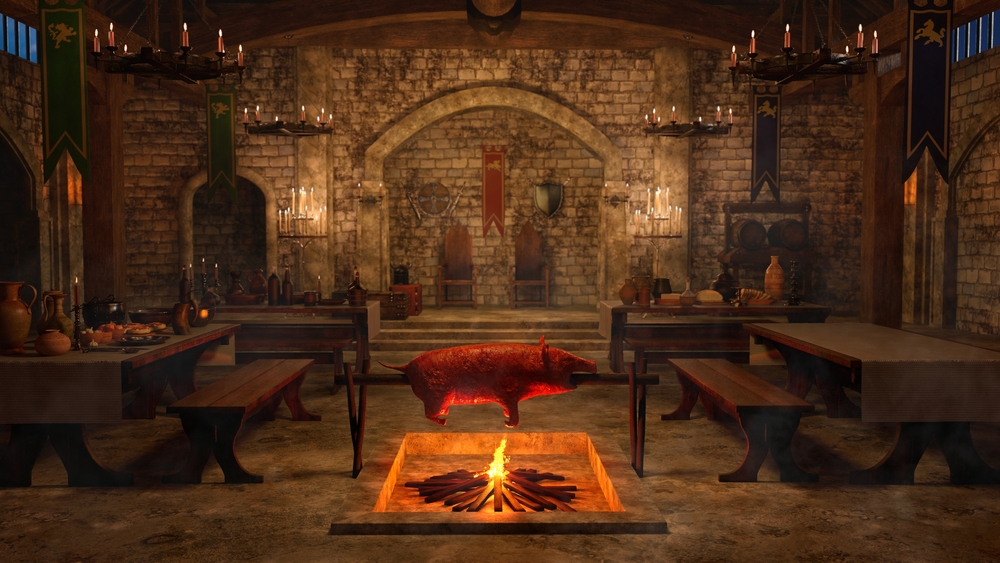
Fish
Vikings took advantage of the abundant fish in their freshwater and saltwater sources. They smoked, salted, and dried fish like their meat to preserve it. Pickling was also popular for keeping fish, particularly herring (sursild). They also ate other varieties of oily fish, such as mackerel.
Preservation was essential when they went on sea voyages or to see them through the long winters.
Herring and cod were the most popular fish in the Viking age. “Stockfish” was a dried cod dish they traded throughout Europe; Tørrfisk is unsalted, air-dried cod.
Dairy
Cows, sheep, and goats satisfied their dairy requirements. Due to the difficulties of keeping milk fresh, Vikings used many fermented dairy products – butter, cheese, buttermilk, and yogurt. One of the most popular dairy foods was “skyr.”
Skyr was curds, a soft cheese with a consistency like yogurt. Viking stored and ate skyr in the winter when fresh milk was unavailable.
Vikings made skyr by heating skimmed milk and leaving it to curdle and develop cultures. Once the milk curdled, they strained it through a cloth, scraping off the yogurt that remained. The remaining liquid whey was used as a drink to pickle vegetables and fish or preserve meat.
The Vikings also used sour milk, which they added to bread.
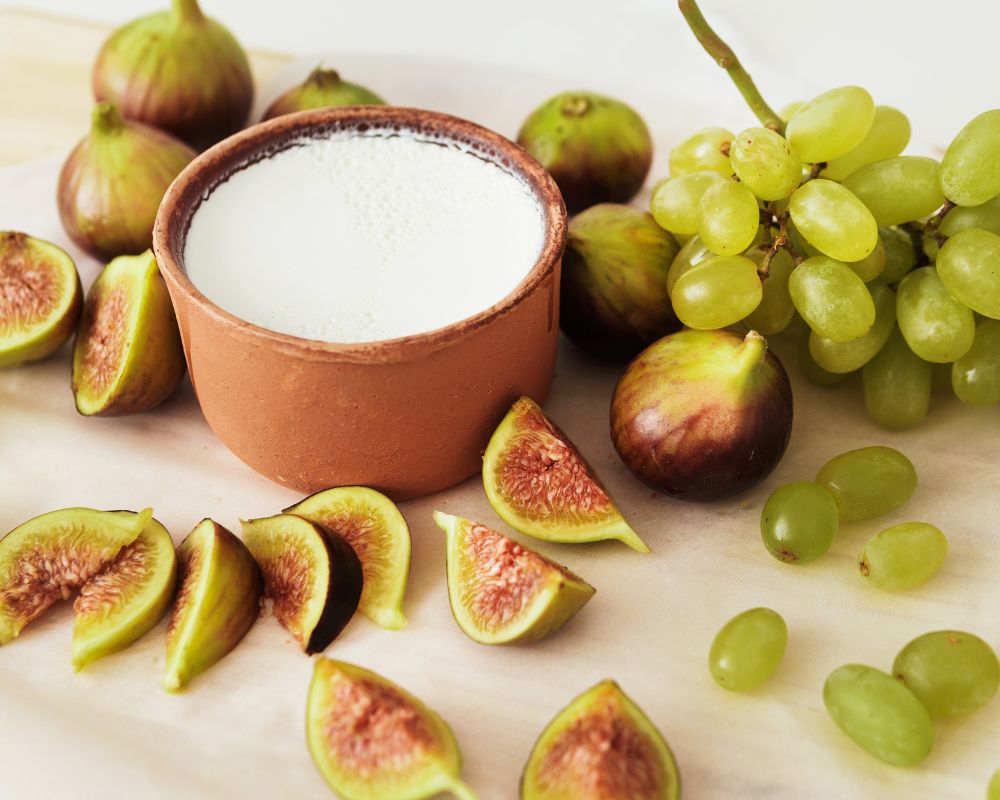
Bread and Grains
Vikings liked to eat skause with multi-grain bread, another dietary staple. They made this bread from a mixture of cereal crops, like wheat, oats, barley, and rye. Their bread also contained beans, honey, nuts, and ground tree bark. Vikings would make sourdough and flatbread.
The bread was made using a skillet placed beneath the skause cauldron while it was heated. This bread would harden as it cooled, so skause was ideal for softening it enough to eat comfortably.
Fruit and Vegetables
Vegetables were frequent additions to the Viking diet. Onions, cabbage, leeks, beans, turnips, celery, carrots, and peas were grown in cultivated plots. They also gathered seaweed, and wild greens, like nettles.
The Viking diet was certainly not bland as their wide use of spices like horseradish, coriander, cumin (a European variety, not the usual one we find in curries), and mustard showed.
They also foraged for apples, berries (cloudberries, lingonberries, and raspberries), plums, nuts, and seeds. These fruits were ideal for drying, storing, and use in winter. Seeds and nuts, such as walnuts and hazelnuts, were also added to their bread or ground into oils.
The Most Popular Viking Dish
Skause formed the basis of the Viking diet.
Once the meat was boiled, it would be removed, and the water reused to cook the vegetables and more meat, gathering more flavor every time. When it was left to sit overnight, a layer of fat would rise to the top, helping preserve the stew.
How Vikings Prepared Their Food
Boiling was the Viking’s preferred way of preparing their meat, which could be from wild sources such as reindeer, elk, or even bear. However, they also raised domestic cattle, pigs, and horses for meat consumption.
The meat was cooked in a cauldron over an open fire, but for more important feasts, they would dig pits in the ground and line the hole with wood. They would then fill the hole with water and hot stones and simmer the meat. Sometimes, they would use a spit to roast their meat, but boiling was the more common method.

Did The Vikings Eat Healthily?
Research shows that a typical Viking diet based heavily on fish, non-root vegetables, tea, water, and little sugar and starches led to higher cognitive functions than diets consisting of fatty and processed foods.
Although Vikings went to great lengths to preserve their meat, excavations have revealed they often caught intestinal parasites from undercooked meat. Vikings also ate poisonous plants as a vegetable or ground to make bread.
What Did Vikings Drink?
Vikings of all ages drank mead and ale instead of water. Water had to be boiled to be safe to drink, so ale and mead became fixtures during mealtimes.
Malted barley was the primary ingredient of their ale and had two varieties: weak and strong. The weak kind was served to children and was a general companion to everyday Viking meals, especially if salty stockfish and dried meats were on the menu.
The stronger ale was drunk, along with mead, during festive occasions. Fermented honey was the main ingredient of mead, although Vikings had plenty of other uses for honey as it was the only sweetener available.
It was added to bread and eaten with fresh and dried fruit as a dessert.
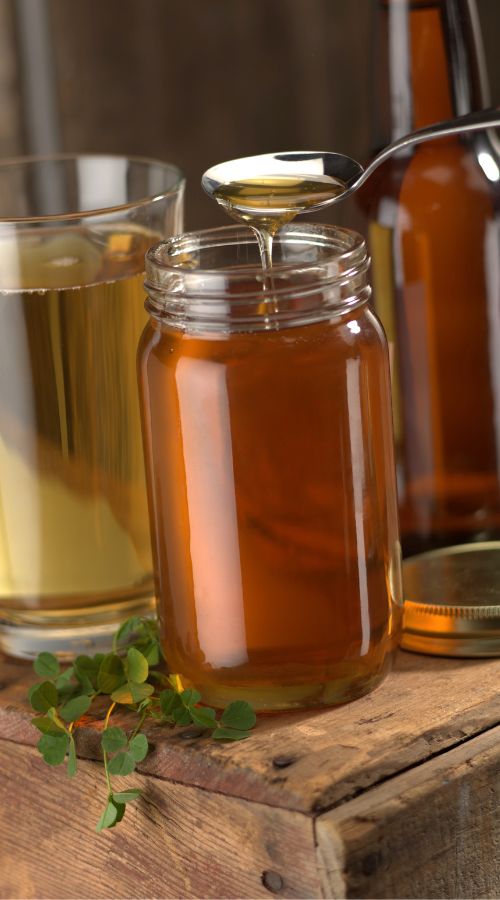
Food In Celebrations And Religion
Feast days would always involve the best foods Viking cuisine had to offer. Harvest, weddings, and religious festivals would all be extravagantly celebrated in Nordic culture. Wide varieties of meats, vegetables, cheeses, bread, and desserts would be served, along with large quantities of the more potent ale and mead.
Winter celebrations would usually involve taking oaths followed by the sacrifice of a boar. According to Viking sagas, excessive consumption of alcohol was one of the major features of feasts and festivals.
The arrival of Christianity and the forbidden dishes
The Catholic church didn’t approve of some Viking dishes. Some Scandinavian peoples, especially those from Greenland, ate a lot of seals and probably walruses too. They also reared horses as a common food source before the arrival of Christianity.
That was until 732, when Pope Gregory III issued a papal edict banning the consumption of horse meat due to its connection to pagan rituals that worshiped gods such as Odin.
Were The Vikings Good Farmers and Hunters?
Archeological digs of Viking settlements show that Vikings were efficient farmers and hunters. They were very resourceful and made the most of what their region offered them in the way of food. Vikings took their hunting and farming techniques with them when they settled in new lands.
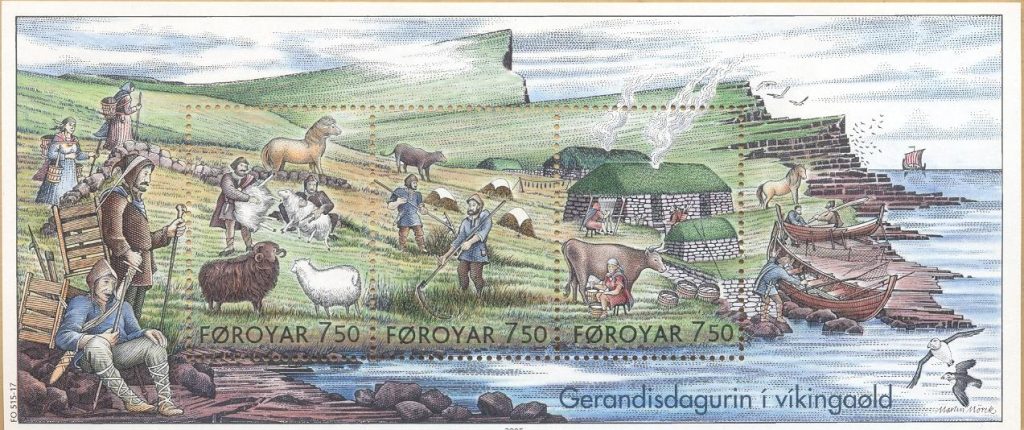
The harsh winters meant Vikings had to plan their hunting and gathering carefully to build up stocks during severe weather.
Viking farms and homes had vegetable gardens, and they cultivated fruit in orchards.
Also, make sure to check my articles on:
- where the Vikings lived
- what the Vikings wore
- Viking art

